How to break into movie concept art
Pro tips for creating a strong portfolio that will catch the eye of film art directors.
08. Use the arrows technique
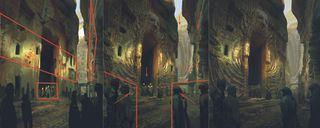
A. Use meaningful shapes
Make sure when setting up your composition to place meaningful shapes. Think of lighting as revealing areas in your canvas where you want people to focus. Generally at this point it’s good to think in the abstract. Instead of thinking of the actual object (say, a person), think of it as a shape, and try to create contrast in form where you want people to look.
B. Add arrows
During the first refinement stage, I start adding the arrows we discussed earlier. Here, the concentric rings around the entrance function as a circular arrow, supported by the background rings in the landscape. I add more figures that are centred around my focal point, all looking towards where the action is taking place. I try to reinforce multiple focal points.
C. Simplify and refine
The last step is just reinforcing the statements from our earlier composition. The great part about setting up your composition beforehand is that it acts as a guide to the rest of your image. The goal is to solve as many problems as you can early on, so when you come to your refinement passes, you're simplifying and rendering rather than changing your canvas.
09. Target pre production vs post production

There are many phases in a film’s production, and a concept artist has a particular role in each. Some artists are hired even before funding is in place, pitching concepts to investors just as the movie is conceived.
When pre-production for a film starts, most of the work is blue sky, meaning it’s focused on exploration and finding the visual style of the film. This is the most open-ended phase of a film, during which time artists usually have more freedom to illustrate their own ideas. As pre-production comes to a close, the creative ideas in a film are resolved.
Post-production takes place after principle photography has been completed, when the majority of the film has been shot on camera. In this phase, concept artists usually deal with shot replacement, shot extensions, visual effects, and assisting animation and other departments to finalise the CG shots.
Often, studios will hire vendors and VFX companies – such as ILM, MPC and Weta Digital – to assist with these shots; with larger-budget films, the amount of vendors required on a film will increase, with CG-heavy films having a multitude of companies involved. While visual development occurs in both sections of a production, generally speaking more development takes place during the earlier phases of the project.
10. Learn about VR
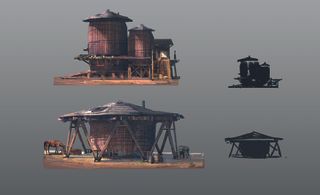
Virtual reality is a game-changing technology that’s having a big impact on the industry. Designing in a virtual space has become more popular in film production: set designers construct 3D models of the actual stage, then use real-time simulations that enable the director and crew to move around the scene.
This makes conceiving shots and locations easier and faster, sometimes designing sets without any plates or real-world locations. Learning how to design in a virtual set is becoming more important, and a concept artist can offer much more to a team when they can work with this technology. Being fluent in a 3D modelling package is a must when it comes to this kind of work.
For a bit of VR inspiration, why not immerse yourself in these VR podcasts?
11. Consider working for a VFX company
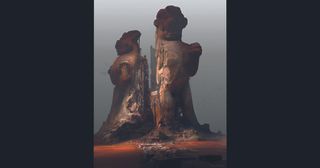
Just as there are differences in production, there are major variations between working within an outsourcing or VFX company versus an on-set art department. When you're working off-site on films, say for a VFX firm or visual development outsourcer, you're surrounded with an extra layer of colleagues, art directors and leads who can help you grow as an artist.
Many companies will have artists on several projects at once, which will be very exciting on the creative side as you're switching between many types of design.
In contrast, working in an on-set art department brings you closer to the production. You'll interact with the production designer and sometimes the director as well, depending on the project.
In a physical art department you work with many more disciplines, with set designers, graphic designers, and the on-stage crew. Based on how long your contract is you might even see the film develop from start to finish. In my experience, you get to try out a wider variety of design in terms of tasks, even though this will normally be governed by your particular speciality.
12. Know your union

Even after you have the portfolio ready, after you know you have the workflow down, many artists still have trouble getting their first gig. If we're talking big productions, getting that first job might be tough, and I recommend approaching either a VFX company or looking for smaller, independent films.
If you're hoping to work on big-budget films in the US, specifically in Los Angeles, then there's a film guild/union (IATSE Local 800) that you're required to join before you can work on any major motion picture.
There are several ways of gaining admittance: you can get accepted through working a full 30 days on a union project, then submitting an application; a production designer can also sponsor you if they want you on a production; and there's a grandfather clause stipulating that if a show you're working on gets unionised, you can apply for union membership during the transition.
That said, it's still hard to get in the guild, and many companies will keep workers on for 29 days, and not sponsor them at all. In the end, being part of the Local 800 union is a huge help to artists working within it, guaranteeing great rates, and providing healthcare.
13. Be sure to network, help others
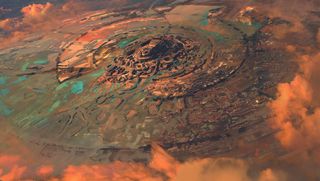
The industry is expanding at an exponential rate, and social media is a great platform to get your work out there. Many companies are looking for professionals, but lack the ability to find the right creatives for the job.
I recommend promoting your work as early as possible. The internet has a way of compounding search results and information to a point where it'll always assist you down the road. If you ever have an excess of freelance work or clients, recommend colleagues who will appreciate the gesture – and return it one day.
14. Collaborate within the department
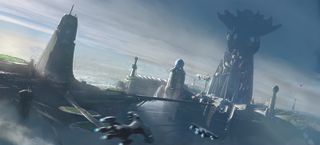
Films don't get made without constant collaboration between the artists on your team and also with many other departments. Because of this, personality is a huge factor in the hiring process, and many times I've seen candidates whose work is incredible get passed up because they have a reputation for being difficult to work with.
No matter how skilled you are, be humble about your work, always respond well to critique, learn from those around you, and be generous in helping others. Your attitude will go a very long way in this small industry, where you regularly reunite with past colleagues. Remember, they could be hiring you some day.
This article was originally published in ImagineFX magazine; subscribe here.
Related articles:

Thank you for reading 5 articles this month* Join now for unlimited access
Enjoy your first month for just £1 / $1 / €1
*Read 5 free articles per month without a subscription

Join now for unlimited access
Try first month for just £1 / $1 / €1
- 1
- 2
Current page: Tips 8-14 for budding movie concept artists
Prev Page Tips 1-7 for budding movie concept artistsGet the Creative Bloq Newsletter
Daily design news, reviews, how-tos and more, as picked by the editors.
